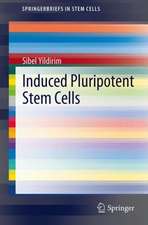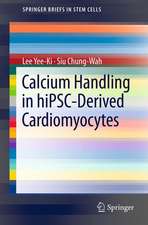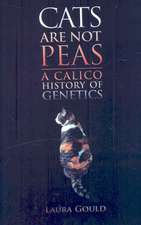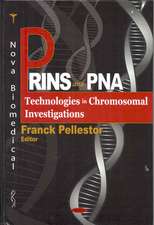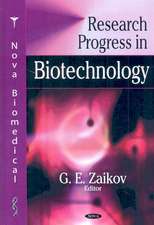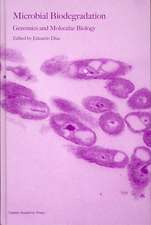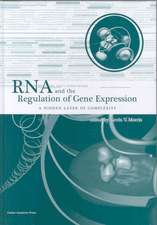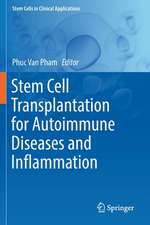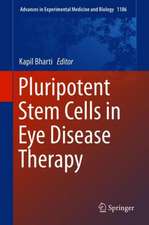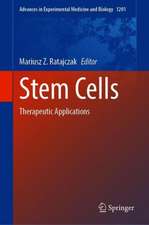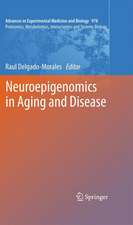Stem Cell Genetics for Biomedical Research: Past, Present, and Future
Editat de Raul Delgado-Moralesen Limba Engleză Hardback – 9 iul 2018
In base of the limitations of current disease models and in front of the unmet necessity of finding therapeutical interventions for human disorders, the availability of stem cell technology has opened new doors for several fields. The unlimited self-renewal capacity and more extensive differentiation potential of stem cells offers a theoretically inexhaustible and replenishable source of any cell subtype. Since Professor Shinya Yamanaka described it, 10 years ago in his seminal paper, that somatic cells could be reprogrammed to inducible stem cells (iPSC) just by expressing four transcription factors, the field of has exploded, especially its applications in biomedical research.
| Toate formatele și edițiile | Preț | Express |
|---|---|---|
| Paperback (1) | 744.91 lei 39-44 zile | |
| Springer International Publishing – 14 dec 2018 | 744.91 lei 39-44 zile | |
| Hardback (1) | 902.99 lei 6-8 săpt. | |
| Springer International Publishing – 9 iul 2018 | 902.99 lei 6-8 săpt. |
Preț: 902.99 lei
Preț vechi: 1101.21 lei
-18% Nou
Puncte Express: 1354
Preț estimativ în valută:
172.79€ • 184.77$ • 144.07£
172.79€ • 184.77$ • 144.07£
Carte tipărită la comandă
Livrare economică 17 aprilie-01 mai
Preluare comenzi: 021 569.72.76
Specificații
ISBN-13: 9783319906942
ISBN-10: 3319906941
Pagini: 448
Ilustrații: XI, 426 p. 32 illus. in color.
Dimensiuni: 155 x 235 mm
Greutate: 0.79 kg
Ediția:1st ed. 2018
Editura: Springer International Publishing
Colecția Springer
Locul publicării:Cham, Switzerland
ISBN-10: 3319906941
Pagini: 448
Ilustrații: XI, 426 p. 32 illus. in color.
Dimensiuni: 155 x 235 mm
Greutate: 0.79 kg
Ediția:1st ed. 2018
Editura: Springer International Publishing
Colecția Springer
Locul publicării:Cham, Switzerland
Cuprins
Part I: Stem cells for brain disorders.- Chapter1: Human induced pluripotent stem cell-derived neurons to model and gain insights into Alzheimer’s disease pathogenesis.- Chapter2: Modeling schizophrenia with human stem cells.- Chapter3: Rett Syndrome and Stem Cell research.- Chapter4: Stem Cell Applications in Spinal Cord Injury: A Primer.- Chapter5: Cell-Based Therapy for Retinal Degenerative Disease.- Chapter6: Past, present and future of cell based-therapy in progressive multiple sclerosis.- Part II: Stem cells for cardiovascular diseases.- Chapter7: Cardiac Stem Cells: a plethora of potential therapies for myocardial regeneration within reach.- Chapter8: Human Induced Pluripotent Stem Cell-derived Cardiomyocytes in the Evaluation of Cardiotoxic Potential of Drugs.- Part III: Stem cells for general medicine.- Chapter9: Regenerative medicine for diabetes treatment: new β-cell sources.- Chapter10: Dental pulp stem cells promote wound healing and muscle regeneration.- Chapter11: From bench to bedside of mesenchymal Stem Cells use for Rheumatoid Arthritis treatment.- Chapter12: Stem Cells and Cancer.- Chapter13: The relevance of induced pluripotent stem cells for the study of physiological and premature aging.- Part IV: Technical challenges and future.- Chapter14: Pluripotent stem cell banks.- Chapter15: Genetic and Epigenetic engineering: the CRISPR/Cas9 era.
Notă biografică
Raul Delgado-Morales holds a PhD in Neuroscience. He completed his doctoral studies at the Universitat Autònoma de Barcelona working in the field of epigenetics as it relates to depression. After that he received a Marie Curie Postdoctoral Fellowship, to continue his research as a postdoc at the Max Planck Institute of Psychiatry in Munich. There he focused on Alzheimer’s disease. After four years in Germany, he moved to Bellvitge Biomedical Research Institute (IDIBELL), in Barcelona, to lead research on neuroepigenomics. Currently he is the Scientific Deputy Director of IDIBELL.
Textul de pe ultima copertă
This book looks at where stem cell technology is presently and how it is instrumental in advancing the field of disease modeling and cell transplantation. By focusing on major human disorders such as Alzheimer’s disease, cancer, and heart disorders, the book summarizes the major findings in the field of human stem cells and dissect the current limitations on our understanding of stem cells biology. The chapters focus on the genetics, genomics, epigenetics and physiology of stem cells models, together with technological advances on molecular biology such as CRISPR/Cas9 or epigenetic editing, that will be instrumental in the future of human disease modeling and treatment.
In base of the limitations of current disease models and in front of the unmet necessity of finding therapeutical interventions for human disorders, the availability of stem cell technology has opened new doors for several fields. The unlimited self-renewal capacity and more extensive differentiation potential of stem cells offers a theoretically inexhaustible and replenishable source of any cell subtype. Since Professor Shinya Yamanaka described it, 10 years ago in his seminal paper, that somatic cells could be reprogrammed to inducible stem cells (iPSC) just by expressing four transcription factors, the field of has exploded, especially its applications in biomedical research.
In base of the limitations of current disease models and in front of the unmet necessity of finding therapeutical interventions for human disorders, the availability of stem cell technology has opened new doors for several fields. The unlimited self-renewal capacity and more extensive differentiation potential of stem cells offers a theoretically inexhaustible and replenishable source of any cell subtype. Since Professor Shinya Yamanaka described it, 10 years ago in his seminal paper, that somatic cells could be reprogrammed to inducible stem cells (iPSC) just by expressing four transcription factors, the field of has exploded, especially its applications in biomedical research.
Caracteristici
This volume presents an up-to-date compendium of major scientific breakthroughs on human diseases, drug screenings, personalized medicine and regenerative approaches by using stem cells to model or treat the disorders This book covers what would be the desired strategy for the years to come, by methodically dissecting limitations in our current methodology and understanding of stem cells technology This book also summarizes state-of-the-art technology (genomics and epigenomics, crispr/cas9, epigenetic tools, bioinformatics approaches, etc) that will push further the applicability and validity of the stem cell application in biomedical research



